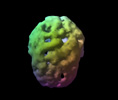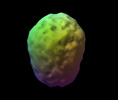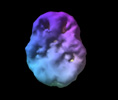Turn on suggestions
Auto-suggest helps you quickly narrow down your search results by suggesting possible matches as you type.
Share your quitting journey
- EX Community
- Conversations
- Journals / Blogs
- Smoking as a Brain Dis-Ease
Smoking as a Brain Dis-Ease
- Subscribe to RSS Feed
- Mark as New
- Mark as Read
- Bookmark
- Subscribe
- Printer Friendly Page
- Report Inappropriate Content
10-31-2014
09:46 AM
Smoking Cigarettes Affects Brain Like Heroin
Heroin, Morphine, Nicotine Affect 'Feel-Good' Brain Chemicals in Similar Way
Just like heroin and morphine, smoking cigarettes triggers the release of addictive "feel-good" brain chemicals. The finding helps researchers understand why smokers have such a tough time quitting despite all the health dangers.
Smoking cigarettes stimulates the brain's production of chemicals called opioids. The opioids are known to play a role in soothing pain, increasing positive emotions, and creating a sense of reward. Both morphine and heroin trigger this same chemical flow.
Smoking cigarettes affects the flow of another feel-good brain chemical called dopamine. Researchers are now investigating the interaction between the two chemicals in the brains of smokers and nonsmokers.
"It appears that smokers have an altered opioid flow all the time, when compared with non-smokers, and that smoking a cigarette further alters that flow by 20 to 30 percent in regions of the brain important to emotions and craving," says lead researcher David J. Scott, a graduate student in neuroscience at the University of Michigan in Ann Arbor.
Learn more about brain changes due to addiction at: http://www.hbo.com/addiction
A SPECT scan is a map of brain metabolism. It shows how well the blood is flowing through arteries and veins in the brain. This is important because the brain must have oxygen and glucose to function (oxygen and glucose are carried to the brain through blood). SPECT scans come as surface scans or in 3-D. Either way, a SPECT shows which parts of the brain are working hard and which parts are not working hard enough.
Surface scans, like those below showing the impacts of alcohol | drug abuse, give visual “proof” of these impacts. The areas that appear to be holes in a SPECT show areas of low metabolic activity, low blood flow. They are not areas of lost brain matter, which is the good news. The brain can heal — these holes can be filled in with proper treatment.
Top-down Surface SPECT During Abuse
Top-down Surface SPECT 1 Year After Abuse
Bottom-up Surface SPECT During Abuse
Bottom-up Surface SPECT 1 Yr. After Abuse
Why might this visual evidence help?
SPECT is helpful because each area of the brain is responsible for different brain (and therefore different body and behavioral) activities. A term to describe this is Functional Neuroanatomy which are descriptions of the various functions that occur in A SPECT scan are a map of brain metabolism.
So what can we do about it? We often speak of Retraining your Brain and here is a Video that tells us the most effective ways to do that:
2012 Roundtable at Stanford - Gray Matters: Brain Science in the 21st Century
I'd like to point out the following comments:
*There are approximately 100 trillion synaptic connections (which is how brain cells – neurons – communicate) in the brain and the goal is to maintain those connections or gain them back.
*We form new synaptic connections every hour – what determines if they persist is if they’re being used.
*Meditation, prayer, mindfulness activities are good ways to heal the brain because they shut down the stress circuitry – allow you to focus on the bigger world, relax and not get hooked into worry – to see the world differently; this is important to creating new memories, as well.
*Stress strips synapses in the hippocampus so reducing stress is critical.
*Nutrition, such as a healthy, Mediterranean-type diet, is important for brain health.
*Sleep is critical to brain health – it allows the brain to codify and organize the day’s learning.
*Exercise boosts the levels of BDNF (an important protein growth factor); BDNF is critical for promoting plasticity, which is the ability to form new neural connections and maintain the connections we have.
*Mindfulness activities are important – they allow for free-thinking – not focused on one task, rather letting random thoughts come and go – pushes synapses.
*We need to believe in the ability of the brain to heal itself and that can be hope or faith or…
*We need to be “in” the world – not on a cell phone or texting but rather open to what all is around you in order to extend/expand synapses.
There are a lot of concrete ways that you can recover your brain. None of them is more effective than keeping those sickerettes away from your face!
N.O.P.E.!
4 Comments
You must be a registered user to add a comment. If you've already registered, sign in. Otherwise, register and sign in.
About the Author
63 years old. 20 year smoker. 11 Years FREE! Diagnosed with COPD. Choosing a Quality LIFE!
It is for freedom that Christ has set us free. Stand firm, then, and do not let yourselves be burdened again by a yoke of slavery. -Galatians 5:1
Labels
-
Helping Adult Quit
13 -
Helping Child Quit
11 -
Longtime Quit
880 -
Preparing to Quit
275 -
Quitting Chewing
17 -
Quitting Medicinal Nicotine
15 -
Quitting Smoking
363 -
Quitting Tobaccoless Pouches
10 -
Quitting Vaping
174 -
Recently Quit
431 -
Staying Quit
173 -
Trying Again
172 -
Undecided
19




